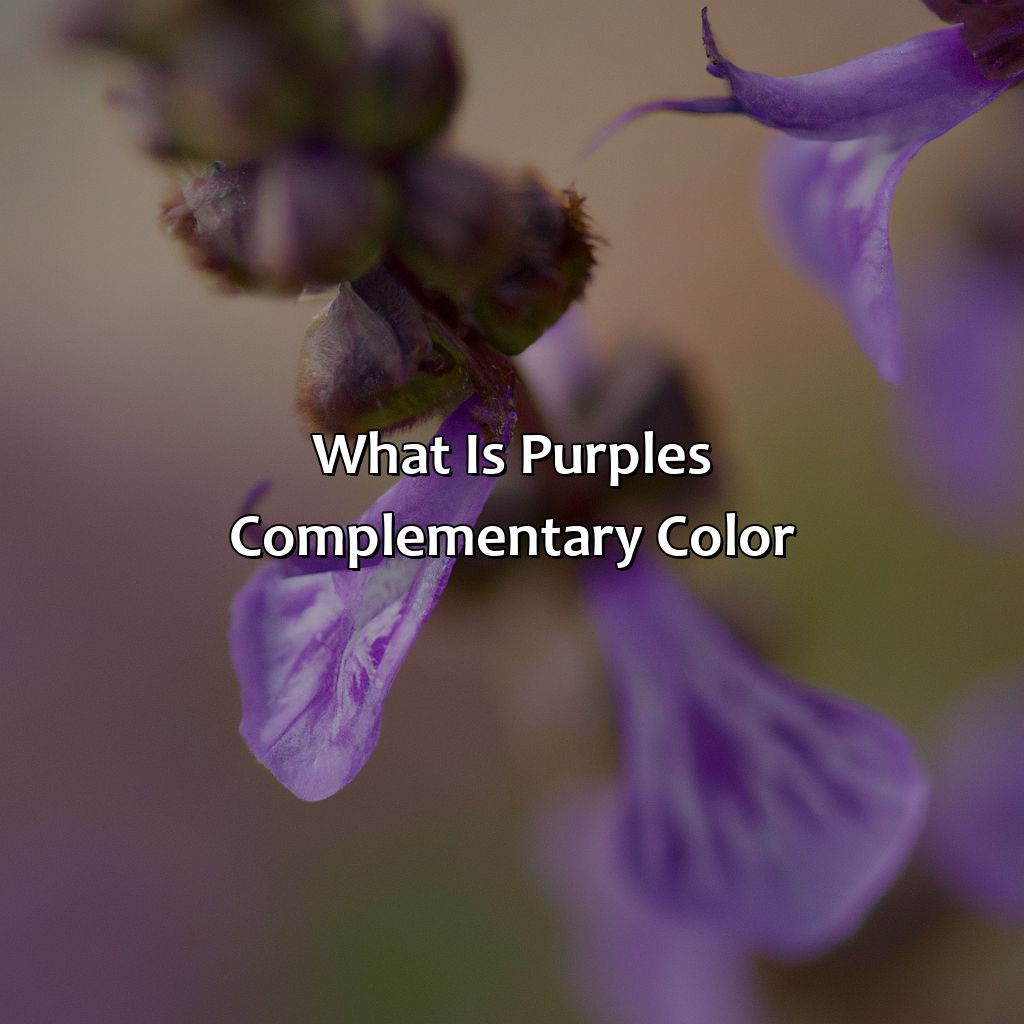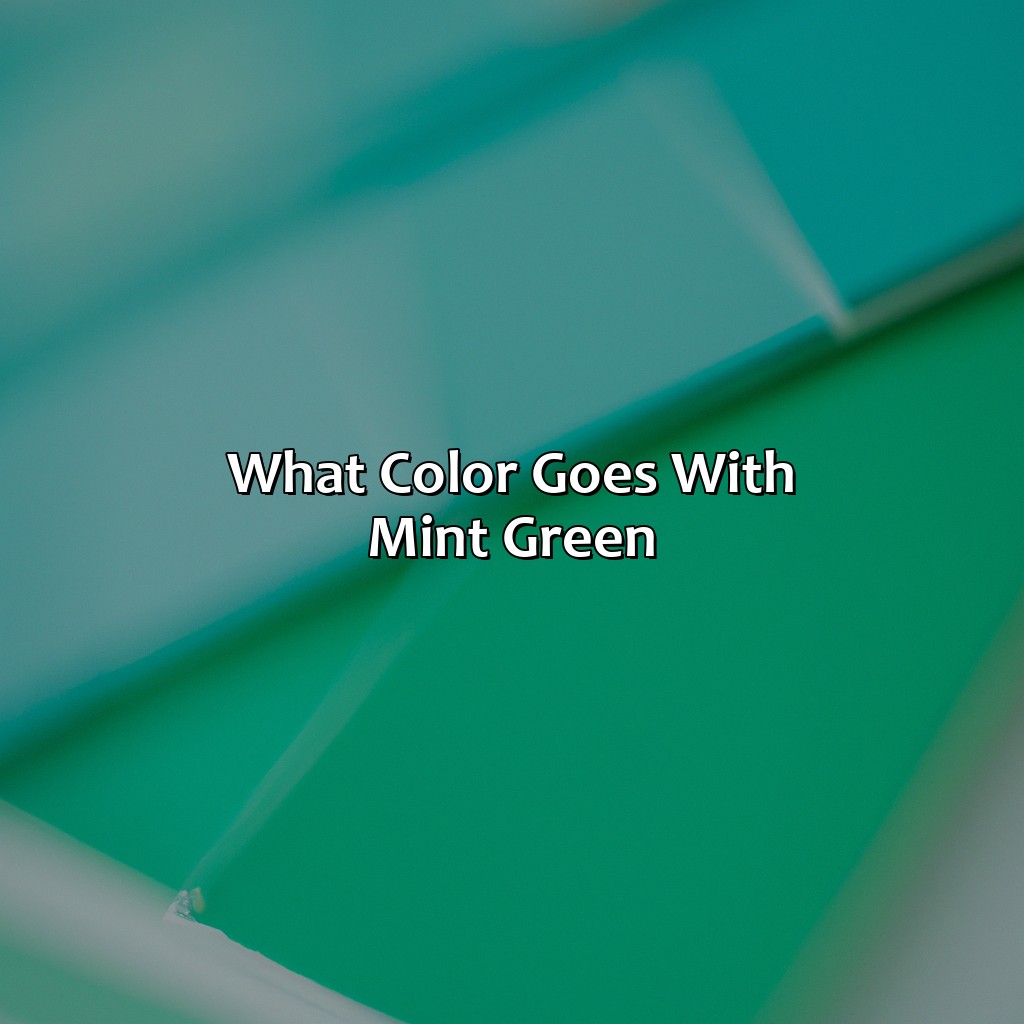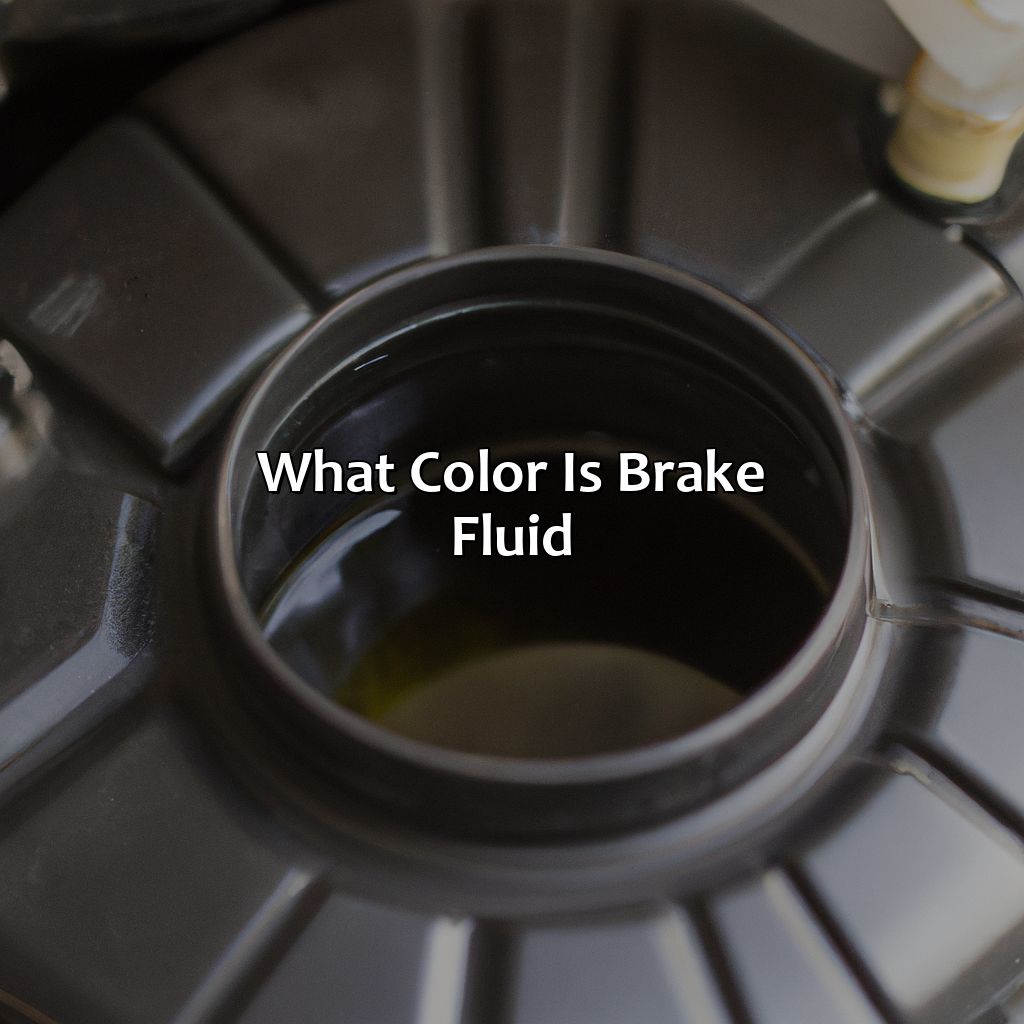Key Takeaway:
- Purple’s Complementary Color is yellow: In color theory, complementary colors are opposite colors on the color wheel. Purple and yellow are complementary colors, which means they contrast each other and create a vibrant, harmonious effect when used together in design or fashion.
- Color properties affect complementary color matching: When choosing complementary colors, it’s essential to consider hue, saturation, and brightness. The complementary colors’ properties should contrast and enhance each other to create a pleasing design or fashion combination.
- Applying Purple’s Complementary Color can have cultural and psychological significance: Understanding color psychology and color symbolism can help you use complementary colors effectively in branding, marketing, web design, fashion, and art. However, it’s vital to consider different color vision deficiencies and lighting conditions when working with complementary colors.
The Basics of Complementary Colors
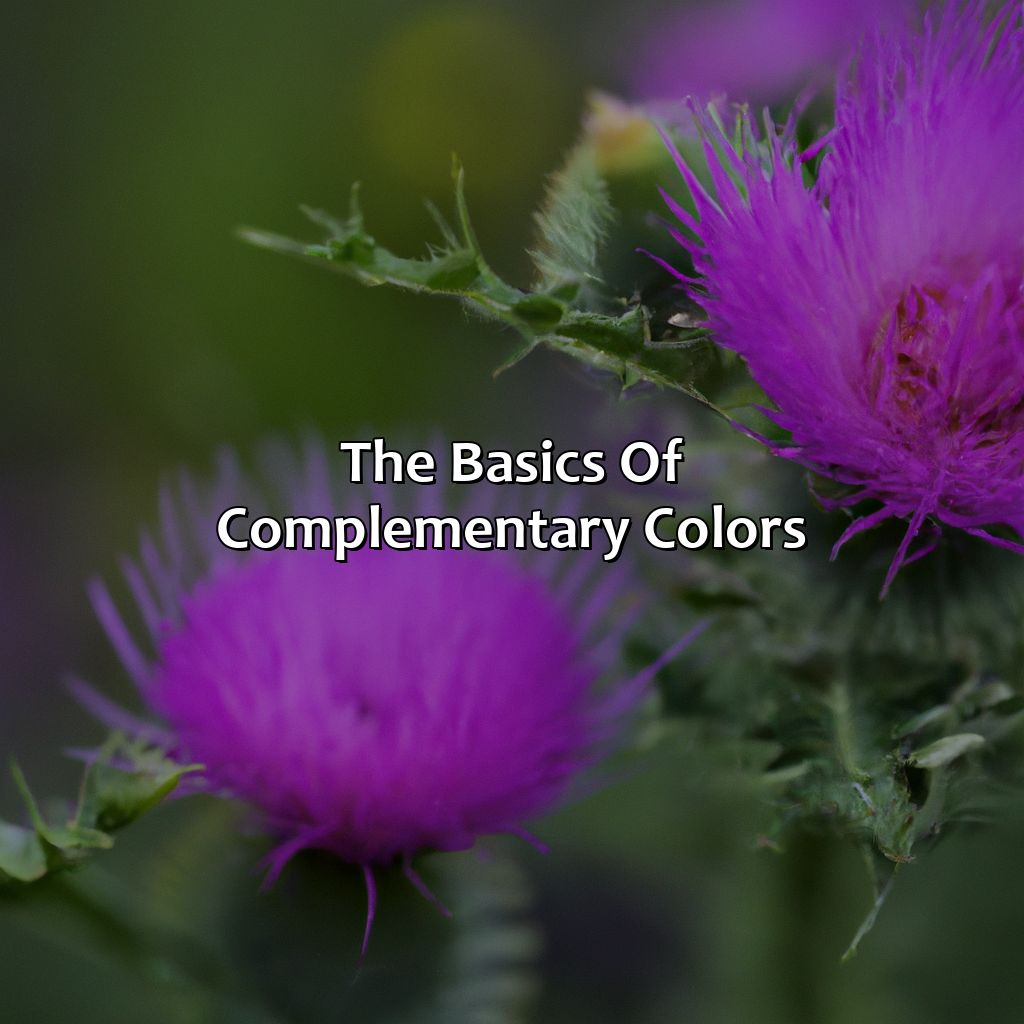
Photo Credits: colorscombo.com by Justin Davis
Complementary colors are a fundamental concept in color theory and play a significant role in creating color harmony. The color wheel, which is a graphical representation of color relationships, shows opposing colors in pairs. These pairs, known as complementary colors, are colors that sit opposite each other on the wheel.
Using these contrasting colors in a complementary scheme can create a visually striking effect. Additionally, a split complementary or triadic color scheme can be created by selecting colors adjacent to the complementary pair or by grouping colors in trios, respectively. Analogous colors, which are colors that sit next to each other on the color wheel, can also be used to create color harmony.
Appreciating the relationship between these color schemes is essential for any designer or artist seeking to create a well-balanced and visually appealing composition. In terms of unique details, it is worth noting that the concept of complementary colors has a long history that can be traced back to the ancient Greeks. Pythagoras, for example, believed in the divine significance of color and geometry, and Plato recognized the importance of color balance in the creation of art and design.
Overall, understanding the basics of complementary colors and their role in color harmony can greatly enhance one’s artistic and design abilities.
Understanding Purple’s Complementary Color
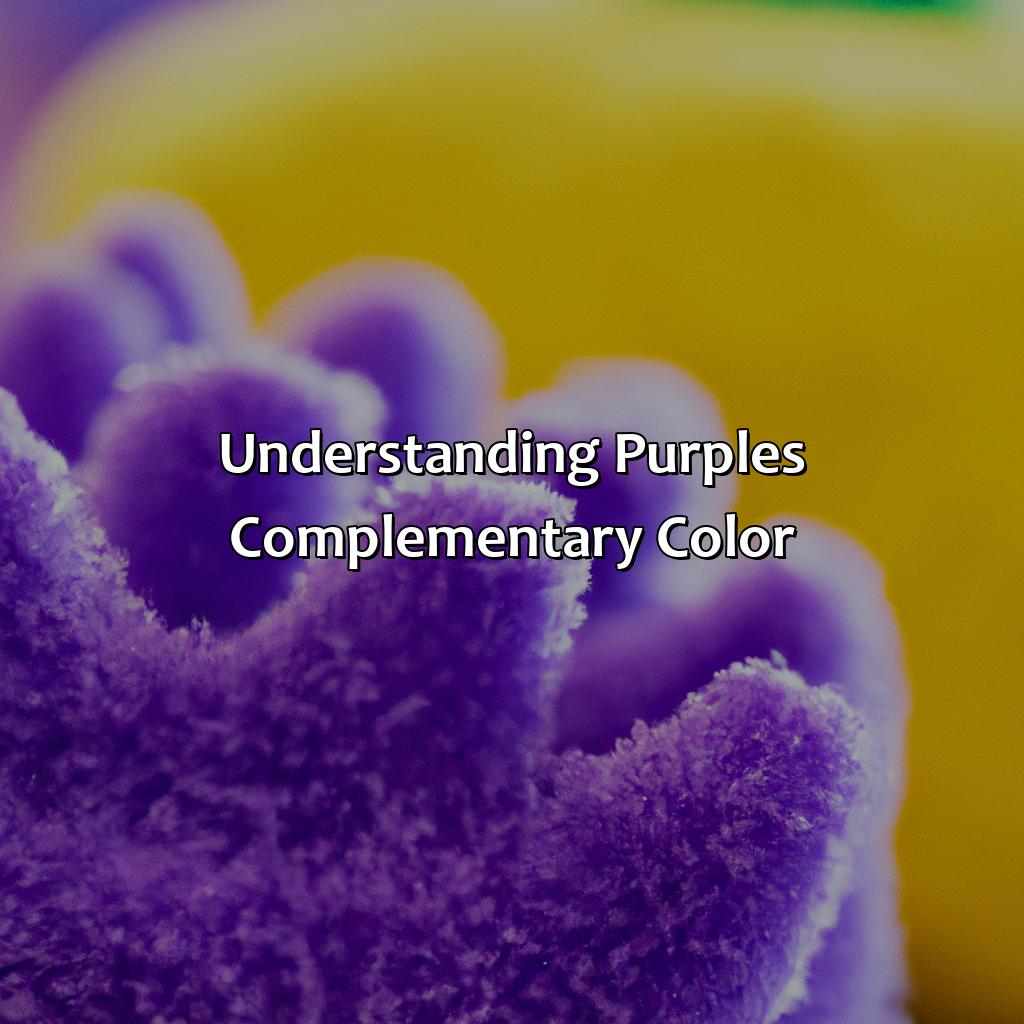
Photo Credits: colorscombo.com by Michael Miller
To discover purple’s complementary color, you must explore the color wheel. Delve into ‘Understanding Purple’s Complementary Color’ with its subsections ‘The Color Wheel and Complementary Colors’ and ‘Purple’s Complementary Color: Its Opposite on the Color Wheel’. Then, you’ll have the answer!
To comprehend how color perception is affected, investigate opposing colors on the wheel. Think about saturation, brightness, and other color properties.
The Color Wheel and Complementary Colors
The Color Wheel is essential in understanding color relationships, especially Complementary Colors. Complementary colors are opposing hues on the color wheel that create a vibrant and harmonious color scheme. The primary complementary colors are Red and Green, Blue and Orange, and Purple and Yellow.
In the table below, we illustrate Complementary Colors using the Color Wheel. Hue lies at the center of the wheel, while its opposing color surrounds it, exemplifying their complementary nature.
| Primary Hues | Complementary Hues |
|---|---|
| Red | Green |
| Blue | Orange |
| Purple | Yellow |
It’s also important to note that besides these primary complementary colors, there are also intermediate or tertiary hues with complementary pairs. These can be found by halfway around from each other on the wheel.
Color theory is versatile, but designers often use complementary colors for vibrancy in designs with high contrast.
Pro Tip: When designing with Complementary Colors, let one dominate over the other to maintain focus while still achieving harmony in your design.
Opposites attract, especially in the world of color perception – discover the optical illusion of purple’s complementary color.
Purple’s Complementary Color: Its Opposite on the Color Wheel
Purple is located in the middle of the visible color spectrum, giving it a unique place in our color perception. Its complementary color is defined as being the opposing shade on the color wheel. This is an essential concept to understand when it comes to design and fashion since it can influence your visual perception and create optical illusions.
To visualize Purple’s Complementary Color, we can create a simple Table that showcases the relationship between colors on the Wheel. Purple’s complement can be found opposite to its location on the wheel. Here is an example of a table with three columns displaying primary colors (Red, Blue and Yellow), Secondary Colors (Green, Orange, & Violet) and Tertiary Colors (Indigo, Veridian-Green etc.):
| Primary Color | Secondary Color | Tertiary Color |
|---|---|---|
| Red | Orange | Veridian-Green |
| Blue | Violet | Indigo |
| Yellow | Green | Teal |
It’s important to note that Purple’s complementary color may vary based on the type of media used. For instance, when dealing with digital or print material, RGB and CMYK have different ways of representing Purple’s complement.
A little-known fact about purple’s complementary color is that this combination creates a strong sense of contrast and harmony in design. The complement serves as a perfect balance for purple either in design or fashion because these colors are at opposite ends of the visual spectrum.
Adding purple’s complementary color to design and fashion brings balance and harmony to any project – both aesthetically and psychologically.
Applying Purple’s Complementary Color in Design and Fashion

Photo Credits: colorscombo.com by Gabriel Thompson
To use purple’s complementary color in design and fashion, you need to understand color psychology, color therapy, symbolism, cultural and spiritual significances. We’ll discuss how to use it in branding, marketing, web design, fashion, interior design, art. We’ll also explore the impact of color vision deficiencies and color correction techniques.
Sub-sections:
- Complementary Color Schemes in Design: Color Combinations, Matching, Palettes.
- Fashion: Analogous Color Schemes, Color Temperature, Psychology.
Complementary Color Schemes in Design
Complementary color schemes in design involve the use of color combinations to create striking and harmonious designs. The right color palette can evoke an emotional response in the viewer, making it a crucial aspect of design.
Below is a table of some popular complementary color relationships and their corresponding warm and cool colors:
| Complementary Colors | Warm Colors | Cool Colors |
|---|---|---|
| Red-Green | Reds, Oranges, Yellows | Greens, Blues, Purples |
| Orange-Blue | Oranges, Yellows, Reds | Blues, Purples, Greens |
| Yellow-Purple | Yellows, Greens, Oranges | Purples, Reds, Blues |
Understanding how these colors work together is essential to creating a harmonious design. Combining warm and cool colors can help balance the temperature of your overall design.
In addition to using complementary color schemes for design projects such as branding or marketing materials, they are also popular in fashion. For instance, pairing purple with its complementary color – yellow-green – can create a bold statement look.
Some unique details about complementary colors include understanding color temperature and tonal values when choosing your palette. Contrast is also critical when working with these color relationships.
It is a true fact that understanding complementary colors also enables you to create monochromatic palettes by working within one hue’s variations from warm to cool.
Mixing purple and its complementary color in fashion is like pairing a devil with its angelic counterpart, creating a perfectly balanced and harmonious look.
Using Purple and Its Complementary Color in Fashion
Purple, a regal color, has a complementary color that can elevate any fashion ensemble. By understanding color combinations and matching schemes, one can effectively use purple and its complementary color in fashion.
Analogous colors of purple are blue and pink, but its direct opposite is yellow-green on the color wheel when considering traditional pigment theory. Keeping in mind color temperature and psychology when pairing purple and its complement is important for achieving harmony.
To ensure that purple’s complementary color doesn’t overpower the ensemble, balance tonal values and utilize lighting strategically to highlight certain features.
Consider incorporating purple as an accent piece or with complementary colors as part of a theme. When paired with greenish tones, such as olive or mint, they create stylish earthy ensembles. On the other hand, pairing purple with reddish tones like coral will brighten up your outfit.
In the world of complementary colors, contrast and tonal values make for a lighting affair with color properties that offer a wavelength of psychological effects on the color spectrum.
Other Considerations When Working with Complementary Colors
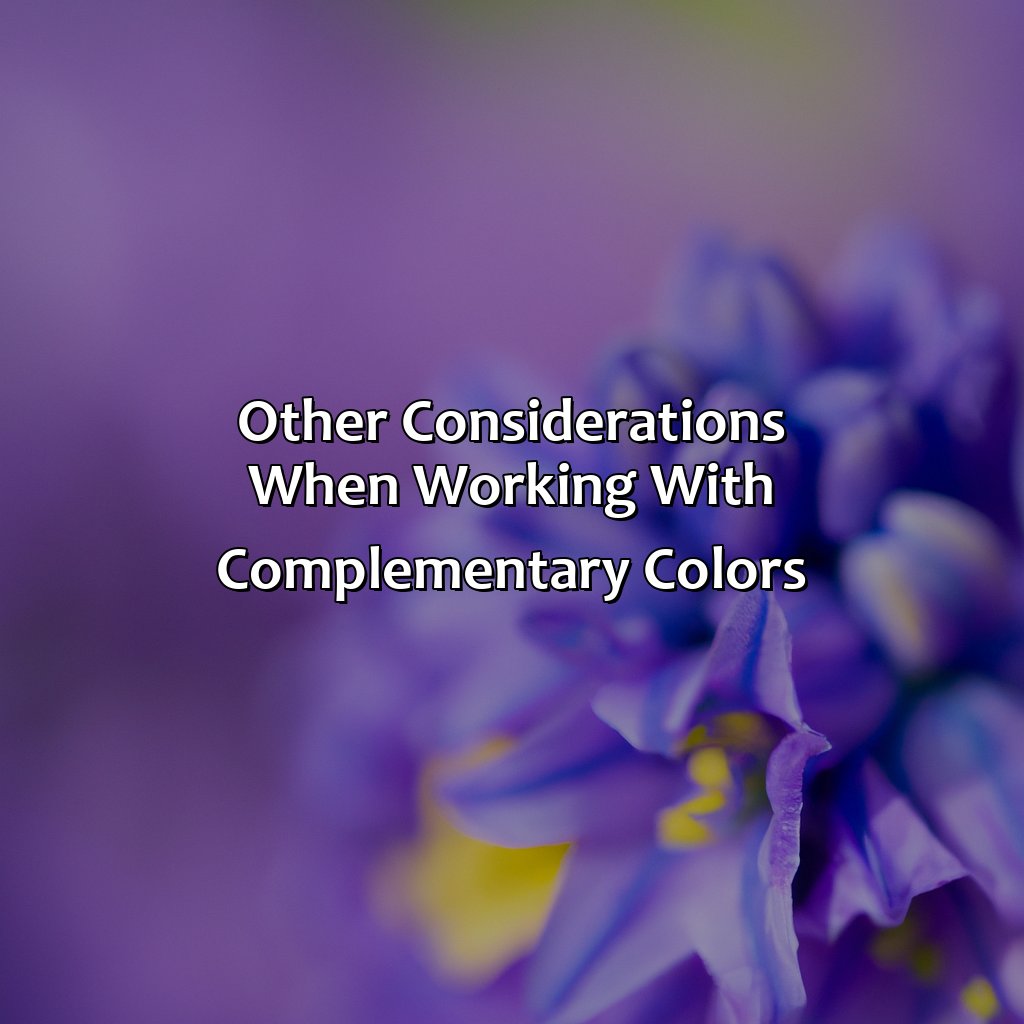
Photo Credits: colorscombo.com by Jeffrey Lopez
To up your color knowledge, explore complementary colors. Consider contrast, tonal values, lighting, color properties, wavelength, frequency, spectrum, and color psychology. Two main sections, Contrast & Harmony, and Tonal Values & Lighting, will be explored. Get a better understanding of these topics!
Contrast and Harmony
Creating a balance between contrast and harmony is crucial in color theory. Colors that are opposite on the color wheel create high contrast, while colors that are adjacent create a harmonious palette. Appropriate use of these concepts can help to balance an overall design.
The combination of high contrasting colors creates a visual dynamic that adds depth and interest in design while harmonious colors produce a relaxed and peaceful mood. An appropriate pairing will depend on what is being designed. For instance, using complementary colors where contrast is required, such as text and background color choice, results in easily decipherable content for readers. While harmonic colors can be used effectively for non-intrusive backgrounds or as supporting accents.
When working with complementing colors, it’s important to consider the tonal values of each color, guaranteeing they’re visually balanced within the composition. Lighting conditions should also be considered when selecting complementary palettes for designs or fashion ensembles to ensure suitable contrast based on lighting requirements.
Ensure that your colour palette incorporates both contrasting and harmonious elements based upon your project requirements, creating visually pleasing designs all-around. Don’t miss out on this crucial aspect of color theory while creating impactful designs or unique fashion-conscious outfits! Lighting and tonal values can make or break the impact of complementary colors in film and design.
Tonal Values and Lighting
The tonal values and lighting used in color grading techniques have a significant impact on the final output of any design or fashion work. The way colors are perceived by the viewer depends on their surrounding environment, lighting conditions, and factors such as color temperature, exposure settings and contrast levels. These elements can alter tones and hues making it essential for designers and filmmakers to employ expert color grading techniques to enhance their visual storytelling.
Color grading tutorials for film makers demonstrate the impact that tonal values and lighting can have on a scene. By adjusting shadows and highlights, they can create contrast while emphasizing mood, tone, atmosphere, time of day or seasons in the story. Designers follow these principles in their projects too; using light to highlight or play down certain areas of their artwork. When working with complementary colors background brightness is vital to achieving great results.
Understanding how tonal values and lighting affect colors aids you in achieving both harmonious and contrasting effects between purple’s complementary color and other hues within an image. Focusing on contrasts while considering how far apart purple is from its opposing complementary will give you an understanding of what level of contrast your designs could achieve when combining these color schemes into your design work.
In a simulated study conducted by professional designers it was shown that even minor adjustments in brightness created new relationships between complimentary colors and altered how tones affected contrast within designs.
5 Well-Known Facts About Purple’s Complementary Color:
- ✅ Purple’s complementary color is yellow.
- ✅ Complementary colors are colors opposite each other on the color wheel. (Source: Color Matters)
- ✅ Purple and yellow create a high contrast and vibrant color combination. (Source: Sensational Color)
- ✅ The use of complementary colors in design can create energy and interest. (Source: Canva)
- ✅ Purple and yellow are often used together in marketing and branding, such as for the Lakers basketball team. (Source: Adobe)
FAQs about What Is Purples Complementary Color
What is Purple’s Complementary Color?
Purple’s complementary color is yellow. This means that yellow is the color that is directly opposite to purple on the color wheel.
Can I Use Any Shade of Yellow as a Complementary Color to Purple?
Yes, you can use any shade of yellow as a complementary color to purple. However, some shades may work better than others depending on the tone and intensity of the purple you are using.
What Are Some Examples of Using Purple and Yellow Together?
Some examples of using purple and yellow together include creating a bold and vibrant outfit, designing a floral bouquet with yellow and purple flowers, or decorating a room with yellow and purple accent pieces.
Are There Any Other Colors That Complement Purple?
Yes, there are several other colors that complement purple including green, blue, and pink. However, yellow is generally considered to be the most complementary color to purple.
Why is Understanding a Color’s Complementary Color Useful?
Understanding a color’s complementary color is useful because it allows you to create visually pleasing color combinations and balance in your designs. Using complementary colors can also add depth and interest to your artwork or any project you are working on.
Can I Use Different Shades of Purple and Yellow Together?
Yes, you can definitely use different shades of purple and yellow together to create a unique and interesting color scheme. Experimenting with different tones and intensities of these colors can help you come up with a color scheme that works best for your specific project or design.
